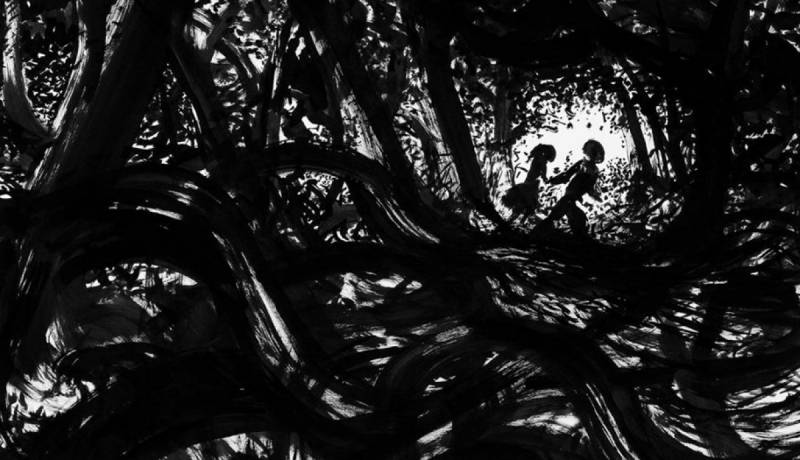By the time the final Grimm edition emerged in 1857, the idea of parents leaving their own children alone in the woods had simply become too taboo to retain—even in a tale that featured attempted cannibalism. As such, all subsequent editions transformed Hansel and Gretel’s coldly practical mother into an overtly abusive stepmother. And their father—already unsure of abandoning his kids in the original story—was presented in a more sympathetic light, thanks to added lines of dialogue, including, early on: “I do feel sorry for the poor children.”
Through the decades as we’ve continued to tell the story, small but key details like these have changed to reflect shifting cultural sensibilities. In the composer Engelbert Humperdinck’s 1893 opera Hänsel und Gretel, for example, the children’s mother was still present and still cold (threatening the kids for not doing their chores and such) but she only sent them into the forest to pick strawberries. That’s quite the leap away from escorting them there to die.
By the time Ray Harryhausen’s stop-motion rendition of Hansel & Gretel appeared in TV in 1951, the children were going into the forest entirely of their own accord, in order to forage for food to help their stressed-out single father. In this Hansel and Gretel, the kids were simply performing a selfless deed for their family—and their bravery was rewarded with “gold, silver and precious jewels.” The lesson in this version was about familial bonds, not betrayal—a reflection of the family values of the early ’50s.
In 1983, when Faerie Tale Theatre created a version for television, the moral became even further simplified, with Shelley Duvall introducing the production as a story “about a little boy and girl who learn not to take candy from strangers”—a parable of the prevailing “stranger danger” message for youngsters in the 1980s.
The new millennium brought several surefire signals of filmmakers’ struggle to make Hansel & Gretel make sense for modern audiences. A 2002 movie version starring Dakota Fanning and Taylor Momsen rounded down the story’s sharpest edges by introducing heavy-handed comedic elements and goofy new characters, including Howie Mandel as “The Sandman.”
But that’s nothing compared to what happened in 2013. That year, the world ended up with both Hansel & Gretel: Witch Hunters (a Jeremy Renner-starring vehicle in which the children are all grown up and hunting the source of their nightmares) and Hansel & Gretel Get Baked (a stoner movie best forgotten entirely).
While movie adaptations were struggling, in 2014 Neil Gaiman and illustrator Lorenzo Mattotti successfully transformed Hansel & Gretel into a current-day story about refugees surviving war. Their book collaboration succeeded in bringing a grim reality back to the story that had become almost entirely absent in the preceding decades. “In the early Grimms’ versions, there was famine,” Gaiman told CNN at the time. “Talking to some of the Syrian refugees who ran out of food, telling me about getting permission from their imam to eat cats and dogs because all the other animals had gone—about eating grass, drinking swamp water—I thought, ‘This is Hansel & Gretel now.’”
While we are undoubtedly far better off in 2020 than in the Great Famine of 1315 that originally birthed this story, it makes sense now for a new Hansel & Gretel to be rooted in horror. With America in the midst of thousands of child separations at the border, a light-hearted narrative in which parents voluntarily abandon their children would be insensitive at best. And while the nation is far from famine, hunger is a real and present danger for millions of American children right now.
As long as the dark 700-year-old story of Hansel & Gretel keeps being reinvented, it will always reflect the times. The fact that it’s returned to its medieval roots this year? That’s a development that should probably give us all pause.


